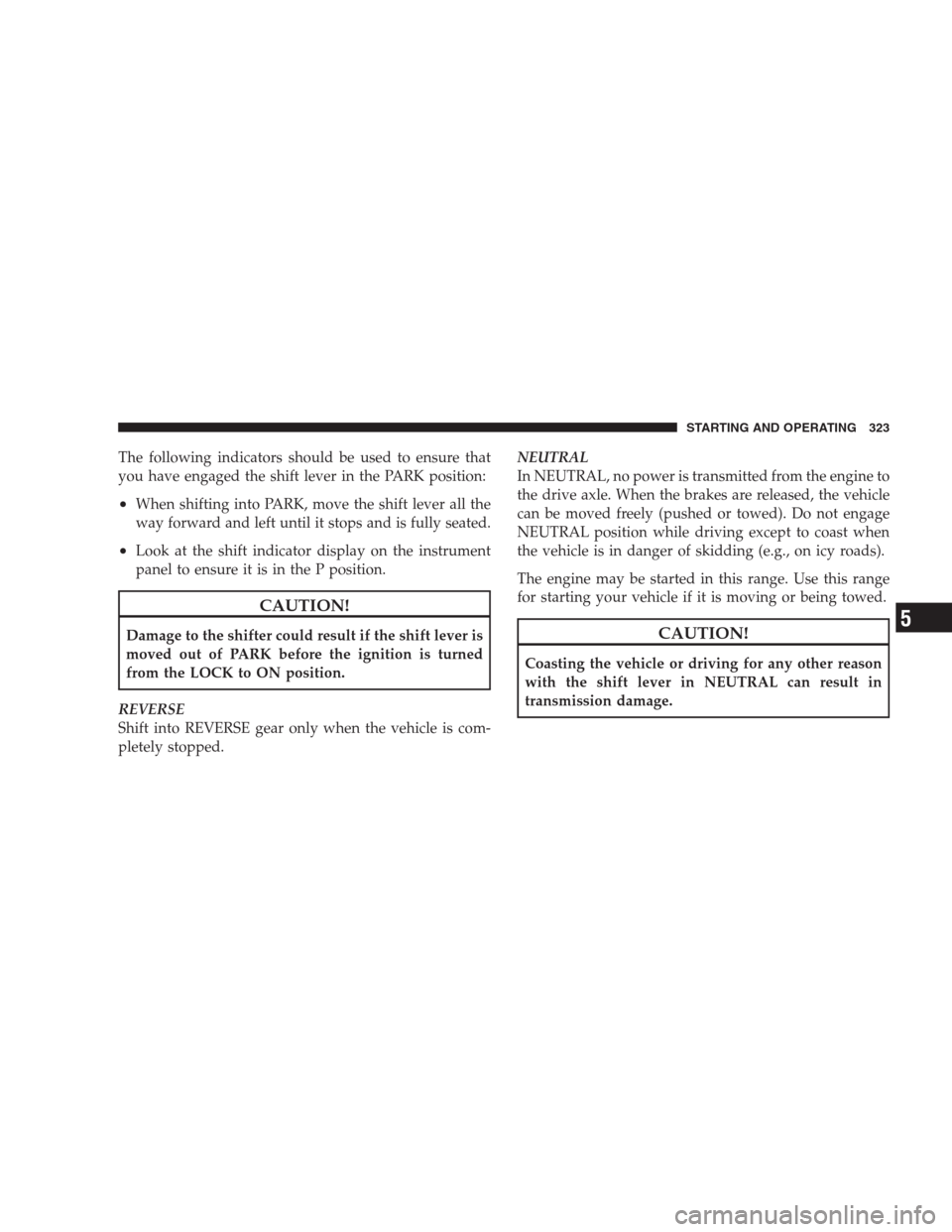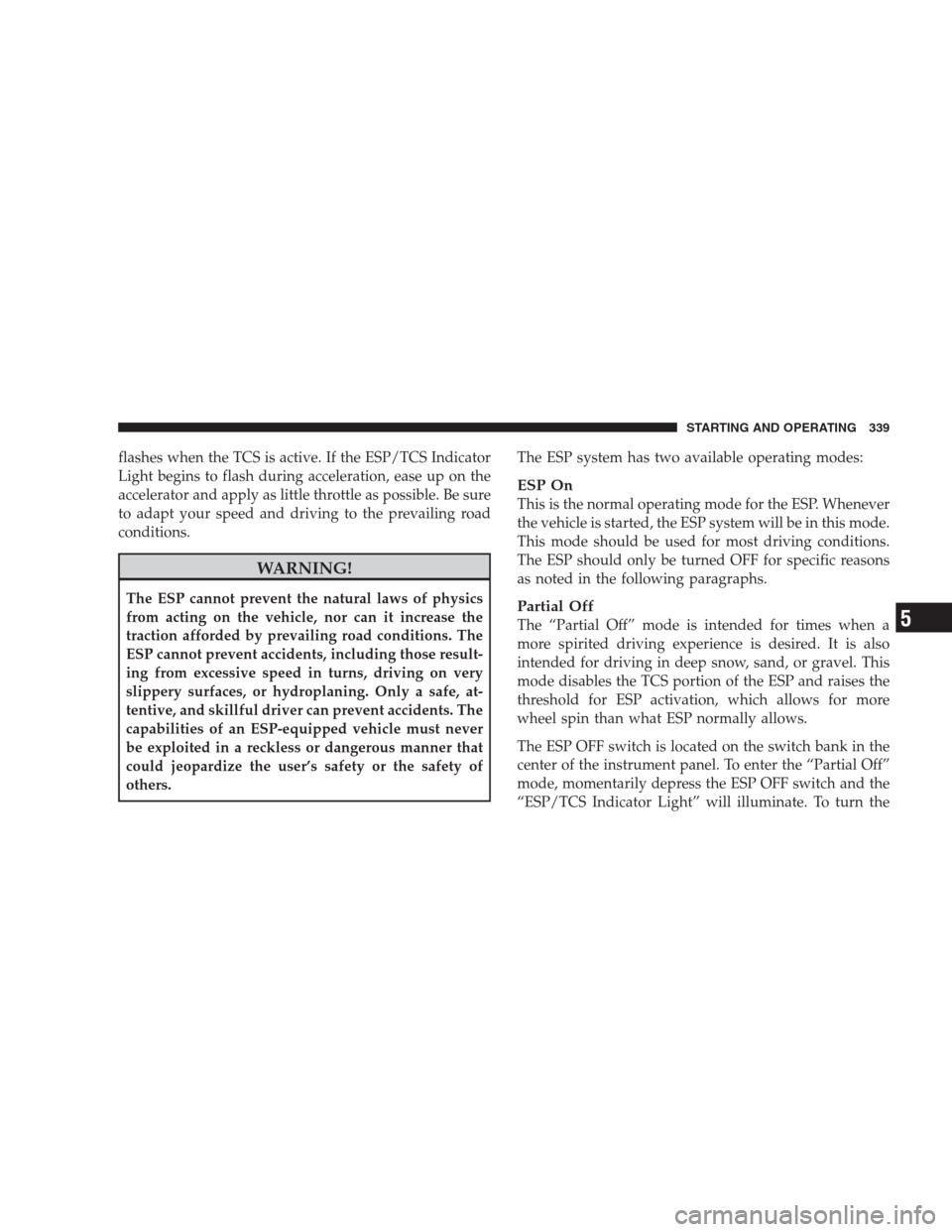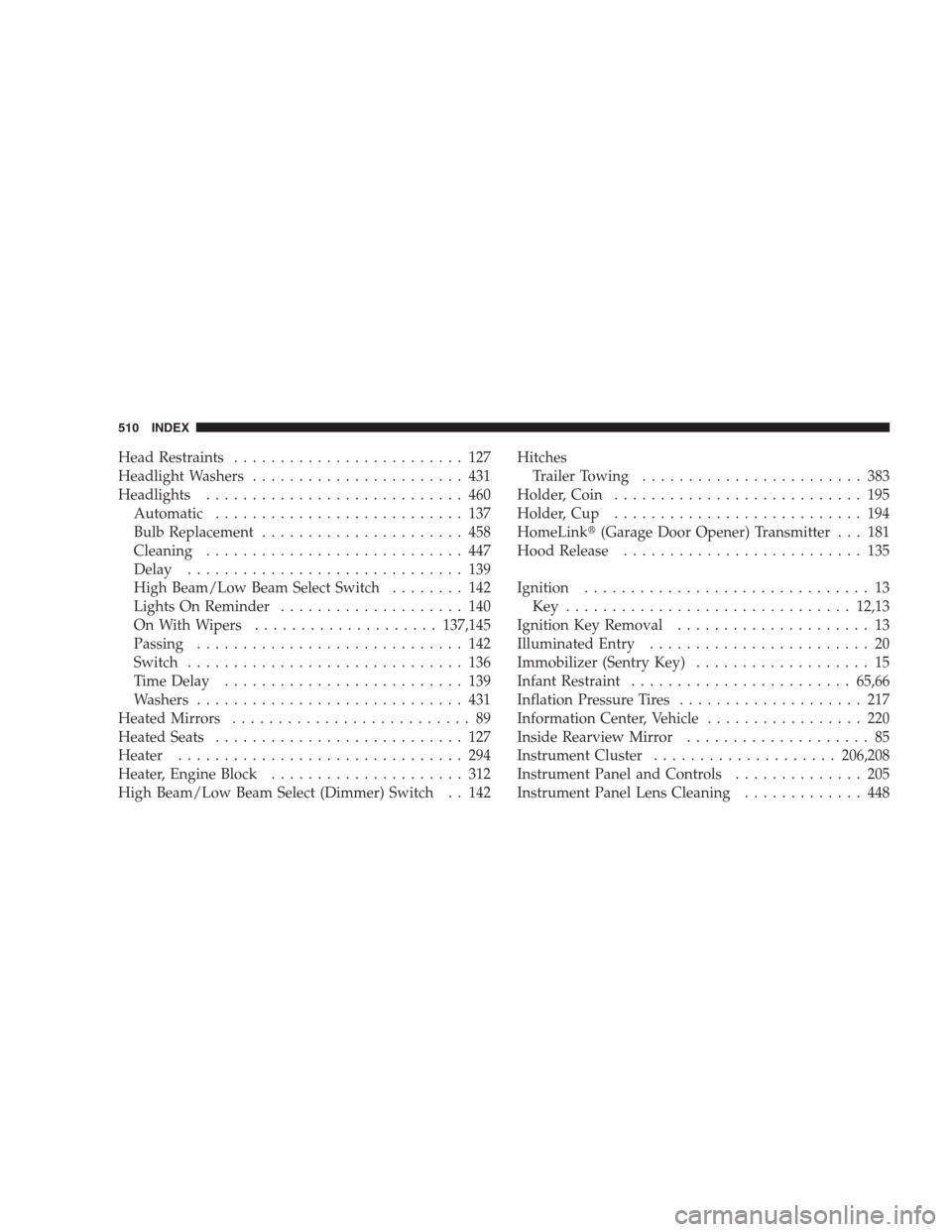Page 320 of 526

The following indicators should be used to ensure that
you have engaged the shift lever in the PARK position:
•When shifting into PARK move the shift lever all the
way forward and left until it stops and is fully seated.
•Look at the shift indicator display on the instrument
panel to ensure it is in the P position.
CAUTION!
Damage to the shifter could result if the shift lever is
moved out of PARK before the ignition is turned
from the LOCK to ON position.
REVERSE
Use REVERSE for moving the vehicle rearward. Always
stop before moving the shift lever to REVERSE, except
when rocking the vehicle.NEUTRAL
The engine may be started in this range.
CAUTION!
Coasting the vehicle or driving for any other reason
with shift lever in NEUTRAL can result in transmis-
sion damage.
WARNING!
Do not coast in NEUTRAL and never turn off the
ignition to coast down a hill. These are unsafe
practices that limit your response to changing traffic
or road conditions. You might lose control of the
vehicle and have an accident.
318 STARTING AND OPERATING
Page 325 of 526

The following indicators should be used to ensure that
you have engaged the shift lever in the PARK position:
•When shifting into PARK, move the shift lever all the
way forward and left until it stops and is fully seated.
•Look at the shift indicator display on the instrument
panel to ensure it is in the P position.
CAUTION!
Damage to the shifter could result if the shift lever is
moved out of PARK before the ignition is turned
from the LOCK to ON position.
REVERSE
Shift into REVERSE gear only when the vehicle is com-
pletely stopped.NEUTRAL
In NEUTRAL, no power is transmitted from the engine to
the drive axle. When the brakes are released, the vehicle
can be moved freely (pushed or towed). Do not engage
NEUTRAL position while driving except to coast when
the vehicle is in danger of skidding (e.g., on icy roads).
The engine may be started in this range. Use this range
for starting your vehicle if it is moving or being towed.CAUTION!
Coasting the vehicle or driving for any other reason
with the shift lever in NEUTRAL can result in
transmission damage.
STARTING AND OPERATING 323
5
Page 335 of 526
When parking on a hill, it is important to apply the
parking brake before placing the shift lever in PARK,
otherwise the load on the transmission locking mecha-
nism may make it difficult to move the shift lever out of
PARK. As an added precaution, turn the front wheels
toward the curb on a downhill grade and away from the
curb on an uphill grade.
The foot operated parking brake is positioned below the
lower left corner of the instrument panel. To apply the
parking brake, push the parking brake pedal down and
then remove your foot from the pedal. To release the
parking brake, push down on the parking brake pedal
and then release.
The BRAKE light in the instrument cluster will turn on
when the parking brake is applied and the ignition
switch is ON.
NOTE:This light only shows that the parking brake is
applied. It does not show the degree of brake application.
Parking Brake
STARTING AND OPERATING 333
5
Page 341 of 526

flashes when the TCS is active. If the ESP/TCS Indicator
Light begins to flash during acceleration, ease up on the
accelerator and apply as little throttle as possible. Be sure
to adapt your speed and driving to the prevailing road
conditions.
WARNING!
The ESP cannot prevent the natural laws of physics
from acting on the vehicle, nor can it increase the
traction afforded by prevailing road conditions. The
ESP cannot prevent accidents, including those result-
ing from excessive speed in turns, driving on very
slippery surfaces, or hydroplaning. Only a safe, at-
tentive, and skillful driver can prevent accidents. The
capabilities of an ESP-equipped vehicle must never
be exploited in a reckless or dangerous manner that
could jeopardize the user’s safety or the safety of
others.The ESP system has two available operating modes:
ESP On
This is the normal operating mode for the ESP. Whenever
the vehicle is started, the ESP system will be in this mode.
This mode should be used for most driving conditions.
The ESP should only be turned OFF for specific reasons
as noted in the following paragraphs.
Partial Off
The “Partial Off” mode is intended for times when a
more spirited driving experience is desired. It is also
intended for driving in deep snow, sand, or gravel. This
mode disables the TCS portion of the ESP and raises the
threshold for ESP activation, which allows for more
wheel spin than what ESP normally allows.
The ESP OFF switch is located on the switch bank in the
center of the instrument panel. To enter the “Partial Off”
mode, momentarily depress the ESP OFF switch and the
“ESP/TCS Indicator Light” will illuminate. To turn the
STARTING AND OPERATING 339
5
Page 398 of 526

HAZARD WARNING FLASHER
The Hazard Warning flasher switch is located in the
center of the instrument panel between the center air
outlets.
Press the switch to turn on the Hazard Warning
flashers. When the Hazard Warning flasher switch
is activated, all directional turn signals will flash
on and off to warn oncoming traffic of an emergency.
Press the switch a second time to turn off flashers.
This is an emergency warning system and it should not
be used when the vehicle is in motion. Use it when your
vehicle is disabled and it is creating a safety hazard for
other motorists.
When you must leave the vehicle to seek assistance, the
Hazard Warning flashers will continue to operate even
though the ignition switch is in the LOCK position.NOTE:With extended use, the Hazard Warning flashers
may wear down your battery.
IF YOUR ENGINE OVERHEATS
In any of the following situations, you can reduce the
potential for overheating by taking the appropriate ac-
tion.
•On the highways — slow down.
•In city traffic — while stopped, place the transmission
in NEUTRAL, but do not increase the engine idle
speed.
NOTE:There are steps that you can take to slow down
an impending overheat condition. If your air conditioner
is on, turn it off. The air conditioning system adds heat to
the engine cooling system and turning off the A/C
removes this heat. You can also turn the temperature
control to maximum heat, the mode control to floor, and
396 WHAT TO DO IN EMERGENCIES
Page 512 of 526

Head Restraints......................... 127
Headlight Washers....................... 431
Headlights............................ 460
Automatic........................... 137
Bulb Replacement...................... 458
Cleaning............................ 447
Delay.............................. 139
High Beam/Low Beam Select Switch........ 142
Lights On Reminder.................... 140
On With Wipers....................137,145
Passing............................. 142
Switch.............................. 136
Time Delay.......................... 139
Washers............................. 431
Heated Mirrors.......................... 89
Heated Seats........................... 127
Heater............................... 294
Heater, Engine Block..................... 312
High Beam/Low Beam Select (Dimmer) Switch . . 142Hitches
Trailer Towing........................ 383
Holder, Coin........................... 195
Holder, Cup........................... 194
HomeLink�(Garage Door Opener) Transmitter . . . 181
Hood Release.......................... 135
Ignition............................... 13
Key ...............................12,13
Ignition Key Removal..................... 13
Illuminated Entry........................ 20
Immobilizer (Sentry Key)................... 15
Infant Restraint........................65,66
Inflation Pressure Tires.................... 217
Information Center, Vehicle................. 220
Inside Rearview Mirror.................... 85
Instrument Cluster....................206,208
Instrument Panel and Controls.............. 205
Instrument Panel Lens Cleaning............. 448
510 INDEX